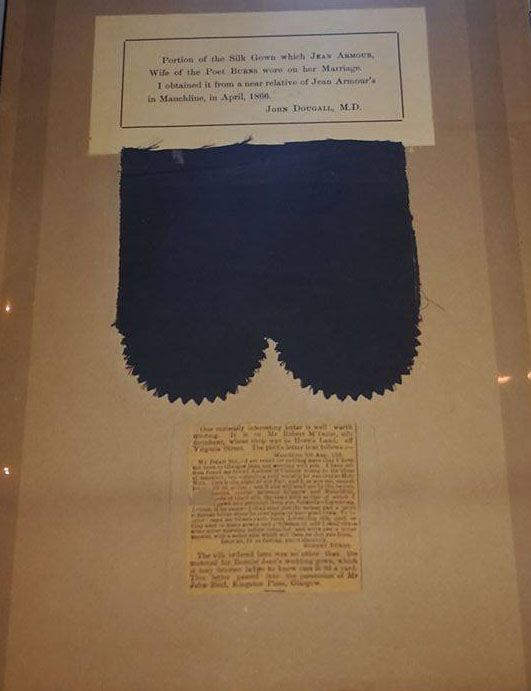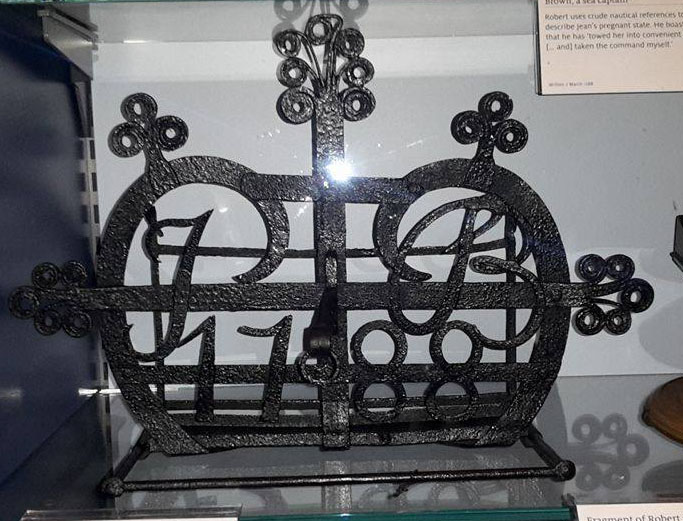Month: April 2017
Fragment of Jean’s wedding gown
One of the smallest and most unassuming items in our collection is a small strip of black cloth mounted on card. This tiny fragment once belonged to Jean Armour’s wedding dress, and is now all that remains of it.

Whilst on one of his many visits to Glasgow, Robert bought 15 yards of a black ‘lutestring’ silk fabric (or ‘English Taffeta’) from a merchant; and it is assumed he then gave it to Jean as a gift. This fabric was then made into her wedding dress, worn in 1788. The two are considered to have been ‘irregularly married’ by writing their names in a Bible well before 1788, however this was the year their wedding was officially registered (and wedding gifts such as the Bannock Toaster are dated similarly).

The style of dress at the time of their marriage in 1788 would have been roughly something like this:

The colour of the wedding dress may be surprising – but it has a very simple reason as to why it is black. Wedding dresses that are now seen as traditional today- white, lacy and worn only on the wedding day; came about due to Queen Victoria, 61 years after Jean and Robert were married. Since most fashion came from the top echelons of society and then trickled down as other classes adopted it – the white wedding dress would take a long time to become popular amongst the working classes. Even then, to have a dress made of purely white fabric and only wear it once was a luxury affordable only to the wealthier bride.
There is also a very practical reason for Jean’s dress to be a dark or black material. Buying or making a dress for single use would not have been possible for anyone but the richest members of society. The wedding dress of an 18th century woman would most likely be her newest or ‘best’ dress. Indeed, many people today will remember getting married in their best suit or best dress as opposed to buying a new and expensive outfit, making it fairly common until very recently. Jean would re-use the dress again and again, and since working around the house would have been a bit of a dirty job in the C18th – a darker coloured dress would have hidden the dirt and any stains a lot better than a lighter coloured material. Of course it is also very practical due to the effort needed in order to keep pale fabrics clean and bright – the distinct lack of modern laundry detergent and bleach makes a white dress for everyday use in the 18th century very difficult to clean.
At the time they were married, cotton fabric was roughly half the price of the ‘lutestring’ silk fabric, which implies that even though the dress would eventually be used for more than just their wedding – Robert was willing to spend the extra money on the fabric to make it all the more special.